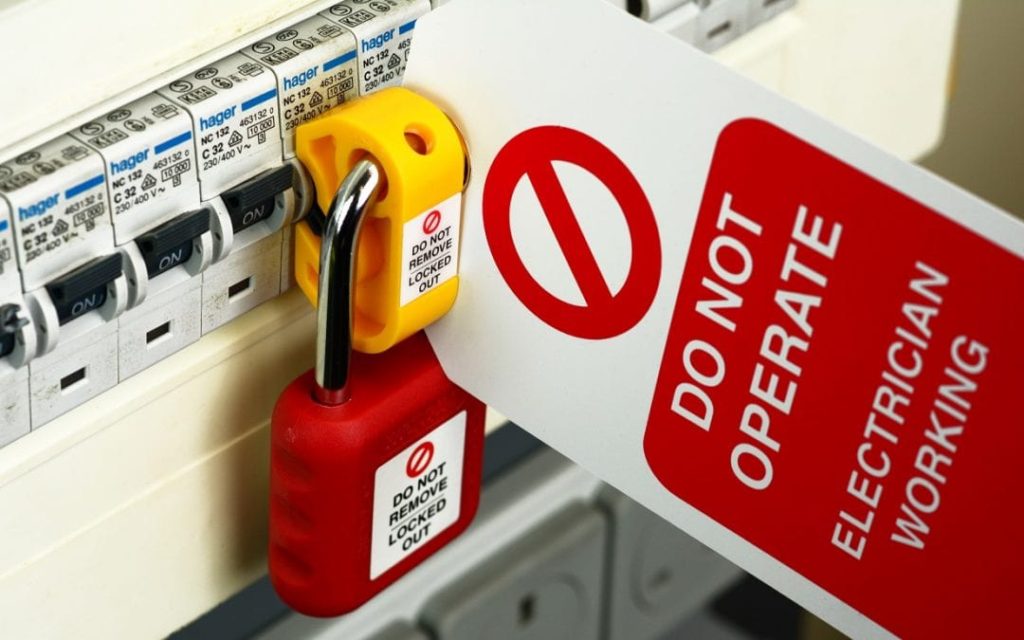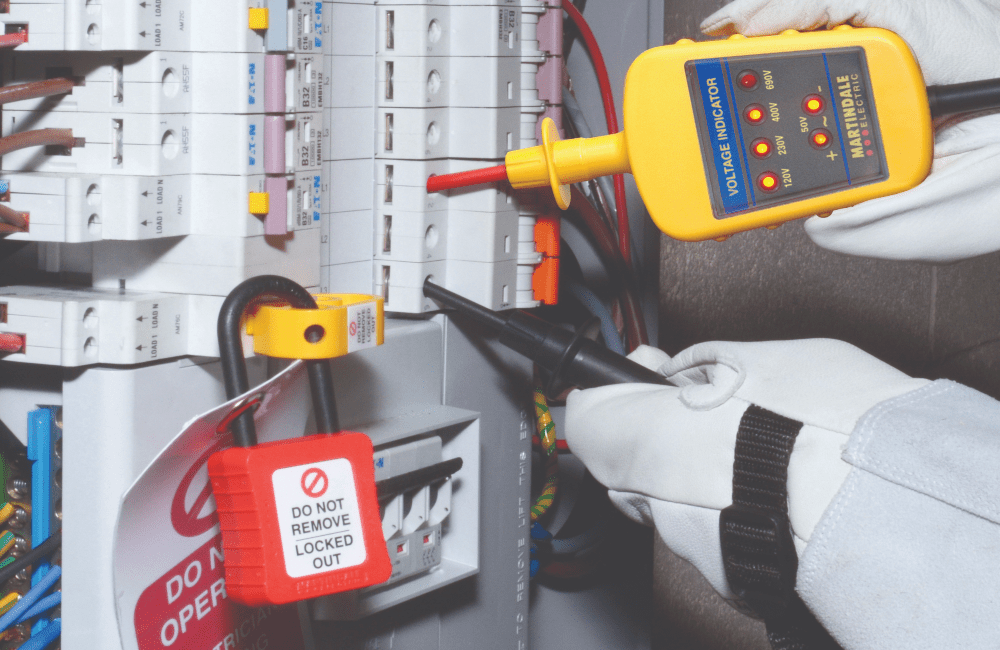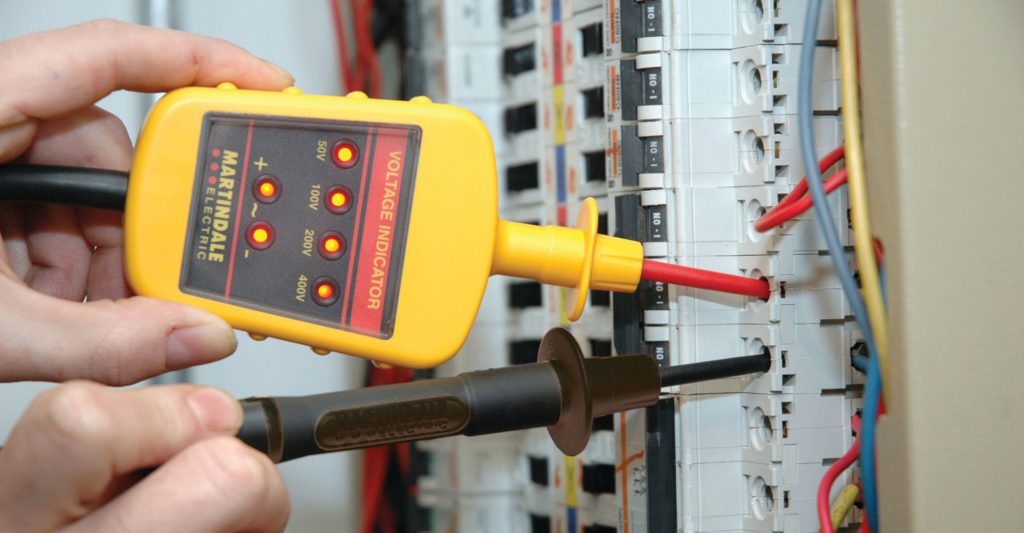Safe Electrical Isolation
Would You Trust A Voltage Indicator With Your Life & Your Business? | Safe Electrical Isolation 2 of 2
March 8th, 2021
Safe Electrical Isolation Using A Voltage Indicator
Electrical Safety
Guest Article by Paul Wilson from Martindale Electric
UKs Leading Manufacturer of Safe Isolation & Voltage Detection
Promoting Electrical Safety

Importance of Safe Electrical Isolation
Safe isolation procedures are in place to ensure that workers on site are not exposed to danger when working on or near live electrical systems and equipment. Both the standards for the equipment and the potential penalties for non-compliance have changed in recent years. With around 1,000 serious accidents in the workplace each year and 16% of all fatalities linked to electricity, it’s clear to see how following simple safe isolation procedures and using the correct electrical test and isolation equipment can keep your team safe and avoid heavy penalties.
If you are already using voltage indicators as part of your electrical safety processes, then you are creating strong foundations for a robust and safe isolation procedure, but it does not end there.
With electricity cited as the root cause of about 1000 accidents at work each year, along with increasing financial penalties and custodial sentences extending to employees as well as Directors, as per section 37 of the Health and Safety at Work Etc Act, developing safe isolation processes to guarantee a more rigorous electrical infrastructure that safeguards people and assets has never been more vital.
The best voltage indicators (VI) for safe isolation are fully compliant with the current standards and have been engineered with safety in mind, eliminating batteries and switches that could lead to false indications. Whilst VI’s are designed with inherent reliability, it is still vital to verify the performance of the voltage indicator itself.
If you are relying on the voltage indicator to prove dead, how are you verifying the voltage indicator?
The importance of confirming that the test instrument is working correctly is as important as confirming that an appliance or piece of equipment being tested is dead – and that there is no possibility of it becoming live while you are working.
The criticality of this cannot be overemphasised. VIs should be proved using a known source or preferably a proving unit – both before and after testing the circuit.
GS38 compliant VI13800 and VI15000 voltage indicators from Martindale Electric have been designed to work without the need for a battery; but if you are currently relying solely on a battery-operated device to provide a positive indication and that battery is flat, then you may not be able to prove that a circuit is dead. Equally, you may not hear the buzzer alert due to background noise. A lack of positive indication does not always prove absence, which is why the cross-check with a proving device could quite literally be a lifesaver.

Safe Electrical Isolation | Ensuring Compliance Around Electrical Safety
How can you be sure of safe isolation and proving dead?
To prove dead, it is vital to test the voltage indicator against a known source – such as a proving unit – then test the circuit, then test the VI against the known source once again to prove that the tester is functioning properly. The proving unit will verify the performance of the voltage indicator.
It is recommended to use a dedicated proving unit matched to the VI in order to fully test that all LEDs on all ranges of the VI are working – safeguarding against incorrect readings due to a faulty LED, for example. A proving unit is safer than the mains and provides a live source wherever you are working – with no need to leave the working area.
Furthermore, it is important not to over-prove: a three-phase VI should be proved at 440V whereas a common 2 pole indicator with a 690V range should be proved at 690V.
By incorporating a proving device into an electrical safety process, that process becomes inherently more robust and reliable. Although a relatively simple addition to the process, when working with or near electrical systems and equipment a proving device can significantly reduce the risk of electrical injury to you and others around you.
There have, tragically, been many instances of injury and loss of life where personnel were working on circuits that were believed to be dead when they were not or had been inadvertently re-energised. As an industry, we have a responsibility to educate as broadly as possible. It is entirely possible to minimise these risks and develop safer working practices through relatively simple changes and the introduction of safe isolation procedures.
As a result, we invest in ongoing development work to make it easier than ever to keep yourself safe. Our proving devices are available as individual units to supplement existing devices but we have also created a package, together with voltage testers and lamps, which we hope will encourage the routine testing of indicators every time they are used. We want to help the industry create new – safer – habits when it comes to electrical safe isolation, whilst always ensuring compliance.
➡ First Blog Of Series – Proving Dead To Keep You Safe | Safe Electrical Isolation 1 of 2
Safe Isolation Procedure
This chart is published with the kind permission of the JIB and shows the safe isolation procedure that you should use when working on electrical systems and equipment.


LV MV HV Jointing, Earthing, Substation & Electrical Eqpt
The UK’s Leading Electrical Safety Equipment Distributors
Thorne & Derrick provide competitive prices and fast delivery from UK stock for the complete range of Electrical Test Equipment, Voltage Detection & Safe Electrical Isolation manufactured by Martindale Electric.
T&D are the UK’s largest stockis of CATU Electrical Safety Equipment of products for underground, overhead line and substation safety at LV, MV and HV cable networks.

Insulating Gloves | Insulating Matting | Voltage Detectors | Arc Flash Clothing | Substation Safety | Portable Earthing LV MV HV
Proving Dead To Keep You Safe | Safe Electrical Isolation 1 of 2
February 5th, 2021
Proving Dead To Keep You Safe
Electrical Safety
Guest Article by Paul Wilson from Martindale Electric
UKs Leading Manufacturer of Safe Isolation & Voltage Detection
Promoting Electrical Safety

Importance of Safe Electrical Isolation
Safe isolation procedures are in place to ensure that workers on site are not exposed to danger when working on or near live electrical systems and equipment. Both the standards for the equipment and the potential penalties for non-compliance have changed in recent years. With around 1,000 serious accidents in the workplace each year and 16% of all fatalities linked to electricity, it’s clear to see how following simple safe isolation procedures and using the correct electrical test and isolation equipment can keep your team safe and avoid heavy penalties.
Article Start
With clear directives from the Health and Safety Executive (HSE) that live work should never be undertaken where there is the option to work dead, establishing an effective electrical safe isolation procedure is critical when it comes to proving dead and keeping you safe.
Despite legislation designed to ensure that everyone goes home safely at the end of the day, electricity is still the root cause of about 1,000 accidents at work each year – with many more incidents inevitably going unreported. With 16% of all workplace fatalities linked to electricity – each and every fatality devastating beyond measure – failure to comply with the Electricity At Work regulations is simply not an option.
The emphasis of enforcement is now as much about the potential risk to personnel as it is about actual incidents. Average fines have trebled in recent years and penalties are extended to all employees, including, for example, chargehands not only Directors, as per section 37 of the Health and Safety At Work Etc Act.
In breach of Section 3(1) of the Health and Safety at Work Act 1974, a British waste management firm was fined £900,000 plus costs in 2017 after a contractor suffered serious injury by inadvertently cutting through live cabling and removing equipment – having been told that it was safe to do so.
Subsequent investigations found that several further pieces of equipment had not been subject to effective safe isolation procedures and had not been electrically isolated.
Proving Dead – for the ultimate protection across the electrical infrastructure
Ensuring that workers are not exposed to danger when working on or near live electrical systems requires a combination of effective safe isolation procedures and equipment that meets the latest standards, including HSE GS38 guidance notes.
With over 90 years of experience in the development of electrical safety testing solutions, Martindale Electric specialises in safe isolation – ensuring that circuits have been de-energised and properly isolated prior to maintenance and modification – and is leading the charge for safer working to reduce preventable accidents.
Wherever possible and practicable, it is vital that engineers and maintenance teams work on dead circuits. By taking the time to identify risks and introduce steps to ensure that all equipment is electrically safe prior to starting work, it is possible to protect employees and contractors working across the entire electrical infrastructure.
Failure to use the right equipment can result in a circuit remaining live – with fatal consequences. So many incidents can be avoided with proper work planning as well as by selecting the right tools for the job.

Safe Electrical Isolation | Ensuring Compliance Around Electrical Safety
When OFF doesn’t mean OFF
One of the most important elements of the safe isolation procedure – the selection and deployment of the right safe isolation equipment – can protect against serious injury and prevent loss of life.
Whilst locking off the circuit correctly is an important step in the procedure, it’s not enough to assume that the circuit is subsequently dead because a particular isolation device has been placed in the OFF position. Although a particular circuit may be locked off, the neutral conductor can become live if an energized load on another circuit is connected to it.
Eliminate uncertainty with a vital cross-check
Guidance from Electrical Safety First – the UK charity working across the electrical industry and government to reduce deaths and injuries caused by electrical accidents – states that before carrying out any work on a circuit, contractors should use a dedicated voltage indicator (VI) and proving unit when proving dead.
It’s not uncommon for circuits to be mislabeled – which can be particularly dangerous as this provides no certainty that the correct circuit is actually locked off.
Whilst it may sound obvious to use a voltage indicator and proving unit to prove dead, we know that there are still far too many instances where engineers might try to use a known live source to test a voltage indicator.
The problem is that the known live source may only light some of the LEDs on the tester – whereas a proving unit will ensure that all the LEDs on all ranges are working, eliminating any uncertainty. A further issue is that a known live source may not be conveniently available, increasing the risk that the VI is not actually proved to be operating correctly.

Safe Isolation Procedures & Proper Equipment Save Lives
Busting the multimeter myth
As well as identifying the right tools for the task, with a wide range of equipment on hand, it’s as important to understand what should not be used as part of this critical process.
Multimeters introduce the potential for human error – making it too easy to select the wrong range. In addition, multimeters rely on battery power; if the batteries are flat then a false “dead” reading will be given on a live circuit. The position is similar with non-contact voltage detectors; whilst these are frequently used to detect live cables, they cannot reliably be used to prove dead or to confirm the safe isolation of a circuit.
Keeping you safe – made simple
It is now possible to ensure full compliance with the latest standards by using a fail-safe range of voltage indicators and proving devices that have been engineered specifically with safety in mind – and are easier to use than ever before.
We know how important it is to simplify the procedure for proving dead and to support the safe isolation procedure with equipment that is reliable, accurate and easy to deploy.
When selecting a voltage detector, you can be assured of compliance with GS38 by ensuring that the unit you are purchasing complies with BS EN 61243-3, such as the VI13800 and VI15000 voltage indicators from Martindale Electric, which have been specifically designed to meet this regulation.
Furthermore, they have been designed without batteries or switches which could lead to false indication. Dedicated purely to detect voltage, we have eliminated the potential for error from selecting the wrong setting, for example. For increased efficiency, we have also introduced complete safe isolation kits – bringing together all the necessary equipment to prove dead and lock out the circuit being worked on.
Widely specified by contractors and maintenance teams, the kits include the GS38 industry standard voltage indicator, proving unit and locking off devices in a combination carry case – so that vital instruments cannot be inadvertently left behind. Easy to use, the kits ensure compliance with the latest regulations and legislation.
Non-compliance presents unacceptable levels of risk in terms of human cost – as well as the potential for financial penalties that would be more than most organizations could bear.
At Martindale Electric, we are committed to keeping you safe and driving down the level of preventable accidents that continue to take place. That’s why we work hard to make it simple for our customers to stay safe and stay compliant – regardless of size or budget – as we believe that everybody deserves the most reliable safe isolation solutions.
➡ Second Blog Of Series Would You Trust A Voltage Indicator With Your Life & Your Business? | Safe Electrical Isolation 2 of 2
Safe Isolation Procedure
This chart is published with the kind permission of the JIB and shows the safe isolation procedure that you should use when working on electrical systems and equipment.


LV MV HV Jointing, Earthing, Substation & Electrical Eqpt
The UK’s Leading Electrical Safety Equipment Distributors
Thorne & Derrick provide competitive prices and fast delivery from UK stock for the complete range of Electrical Test Equipment, Voltage Detection & Safe Electrical Isolation manufactured by Martindale Electric.
T&D are the UK’s largest stockis of CATU Electrical Safety Equipment of products for underground, overhead line and substation safety at LV, MV and HV cable networks.

Insulating Gloves | Insulating Matting | Voltage Detectors | Arc Flash Clothing | Substation Safety | Portable Earthing LV MV HV



